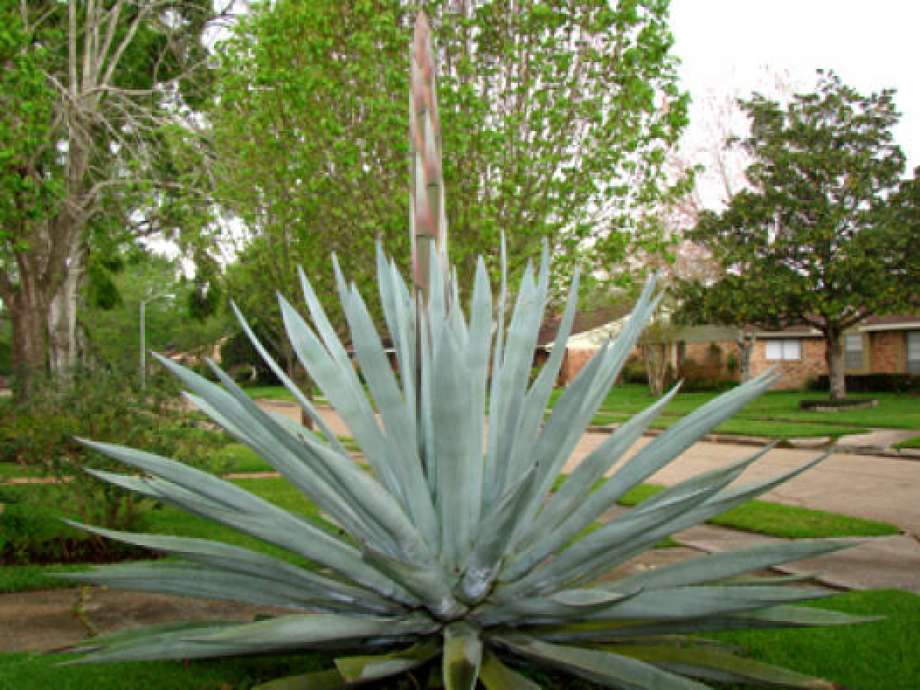13. HOW DID THE CENTURY PLANT GET ITS NAME?
The technical name for this plant is the agave, and it is called a century plant because of a mistaken notion! It is commonly believed that this plant blooms only when it has reached the age of 100 years. The truth is that when it blooms depends on the individual plant itself and the conditions under which it is growing.
In very warm countries, flowers will appear on the century plant in a few years. In colder climates, the plant won’t mature until it’s about 40 to 60 years old.
The agave, or century plant, grows chiefly in Mexico, but it also occurs in southern and western United States and in Central and tropical South America. The plants have a large “rosette” of thick fleshy leaves which end in a sharp point. The stem itself is usually quite short, so that the leaves seem to spring from the root.
When the century plant flowers, a tall stem or “mast” grows from the center of the rosette of leaves and bears a large number of short flowers. After these flowers are developed, the plant usually dies down. Apparently this flowering is quite an effort for the plant, and during all the years it is growing, it is storing nourishment in the fleshy leaves so that finally the flowering can take place.
The unusual type of growth of this plant makes possible an interesting use of it. The stalk of the plant develops very rapidly, and when this happens, there is a rush of sap to the base of the young stalk. In Mexico, people remove this large bud just as it is ready to emerge. Then they scoop out a cavity in the heart of the plant and gather a large quantity of the sweet sap. This sap is called aguamiel, and it is brought in pigskin bottles to a central repository where it is allowed to ferment. This makes it thick and milky. The sugars in the sap have been changed to alcohol and the resulting liquid is sold as pulque, the national drink of Mexico, considered by many people to be a wholesome and nourishing drink.



Leave a Reply